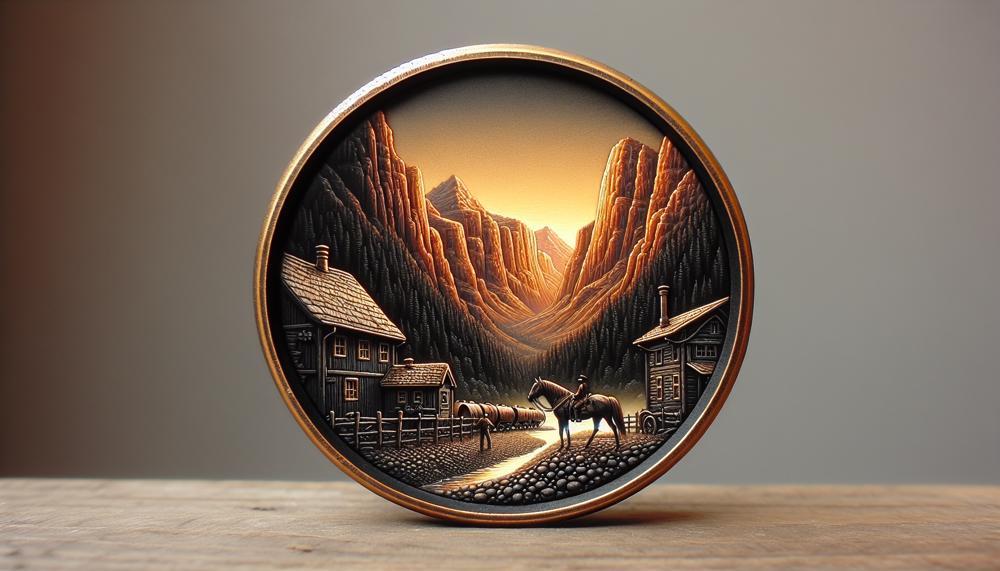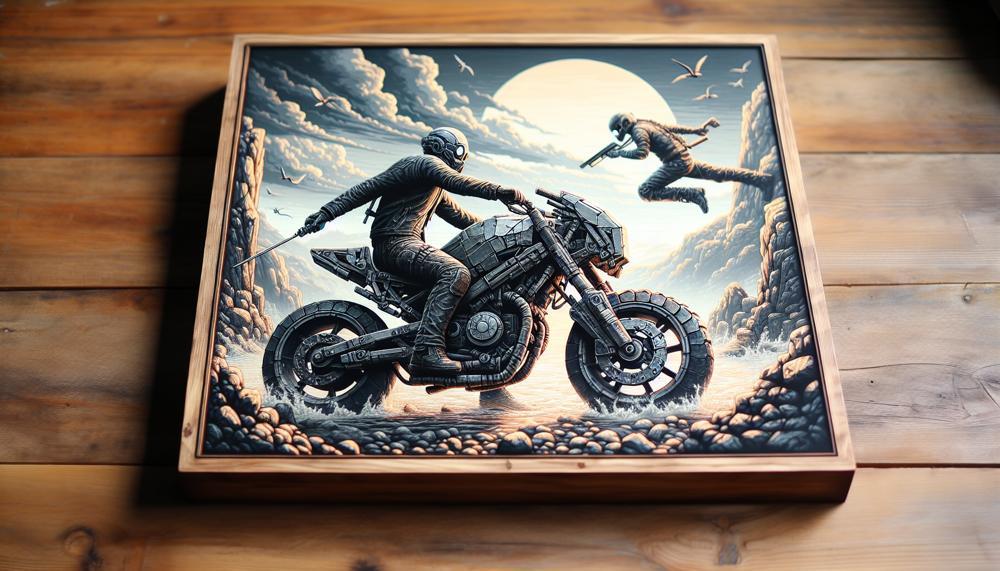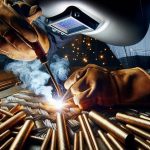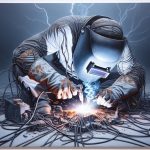Have you ever heard of pinch welds? These seemingly insignificant parts of your car actually play a vital role in its overall structure. They act as the connection point between the body and frame of your vehicle, keeping everything securely in place.
But why should you care about pinch welds? Well, for starters, they are crucial for the safety and longevity of your car. Without proper maintenance and repair, they can lead to serious safety hazards and expensive repairs down the line. That’s why it’s important to understand what pinch welds are and how to take care of them.
In this blog post, we will delve into the world of pinch welds and explore their significance in the automotive industry.
From their location along the bottom edge of your car’s body panels to their role as structural support for your vehicle’s frame, we will cover all the key points you need to know.
So buckle up and get ready to learn more about these often overlooked yet essential components of your car. By understanding pinch welds and giving them proper attention, you can ensure a smooth and safe ride for years to come. Let’s get started.
Contents
- 1 What is a Pinch Weld?
- 2 How Do You Jack a Car with Pinch Welds?
- 3 Can You Put Jack Stands on Pinch Welds?
- 4 How Do You Restore Pinch Welds?
- 5 Can Pinch Welds Be Repaired?
- 6 How Do You Remove a Pinch Weld?
- 7 Benefits of Using Pinch Welds for Vehicle Repair
- 8 Common Mistakes to Avoid When Working with Pinch Welds
- 9 Conclusion
What is a Pinch Weld?
Pinch welding, also known as spot welding, is a widely used process in welding that involves applying heat and pressure through an electrical arc to join two metal pieces together.
This creates a powerful bond between the pieces, making it a reliable method for connecting metal constructions. The main purpose of pinch welding is to provide durability and strength to the joint, as well as maintain structural integrity in applications like automotive repair and construction.
It plays a crucial role in creating solid connections between metal parts that can withstand the test of time. One of the advantages of pinch welds is their versatility, as they can be used on different materials, such as aluminum and stainless steel.
They are also cost-effective and easy to install, making them a popular choice across various industries. However, it is crucial to ensure proper installation and maintenance for the maximum longevity of pinch welds.
Safety should always be the top priority when working with pinch welds due to the use of heat and electricity.
How Do You Jack a Car with Pinch Welds?
When it comes to jacking a car using its pinch welds, safety is the top priority. Follow these steps for a secure and smooth experience:
- Gather your equipment – You will need a jack, jack stands, and a sturdy piece of wood or metal for added support.
- Locate the pinch welds – These are usually found underneath the vehicle, close to the wheels.
- Position your jack – Place the jack directly under the pinch weld and slowly lift it until you reach your desired height.
- Add extra stability – Once the car is lifted, place jack stands on either side of the pinch weld for additional support and safety.
- Avoid relying solely on pinch welds – These are not strong enough to hold the weight of a car on their own. If necessary, place something strong between the jack stand and pinch weld for added reinforcement.
- Choose a secure surface – Always opt for a flat and stable surface to place your jack stands on to avoid any mishaps or damage to your vehicle.
- Repair damaged pinch welds – If the pinch welds are rusted or damaged, make sure to fix them before using them for jacking up your car. This can be done through grinding, welding, or patching.
- Be cautious when removing pinch welds – If you need to remove the pinch welds, exercise caution when using pneumatic chisels, grinding wheels, or cutting discs to avoid damaging nearby metal.
Remember, safety always comes first when using jack stands. Clean the pinch welds before welding, use appropriate equipment and safety gear, preheat the metal before welding, and allow enough time for cooling afterwards to ensure strong and reliable connections.
Can You Put Jack Stands on Pinch Welds?
No, it is not recommended. Jack stands should only be placed under designated lifting points, such as the frame rails or suspension components. Using pinch welds as lifting points can result in serious injuries or even death.
Why It’s Not Safe:
-
- Pinch welds are not designed to support the weight of a vehicle. They are meant for attaching panels and body parts, not for lifting.
- Placing jack stands on pinch welds can cause them to bend or crack, compromising the structural integrity of the vehicle.
- Pinch welds are often located near delicate plastic or rubber components, which can easily be crushed by the weight of the vehicle.
- Pinch welds are not always evenly spaced and may not provide a stable base for the jack stands.

- Using pinch welds as lifting points increases the risk of jack stands slipping or tipping over, causing the vehicle to fall and potentially injure anyone underneath.
- Due to rust or existing damage, pinch welds may already be weakened and unsafe to use as lifting points.
What To Do Instead:

-
- Always refer to your vehicle’s manual for designated lifting points before attempting to use jack stands.
- If your vehicle does not have designated lifting points, seek guidance from a professional mechanic.
- To reinforce the area around the pinch weld, use sturdy materials such as wooden blocks before placing the jack stand on top.
- Choose a flat and secure surface for your vehicle before using jack stands to lift it.
How Do You Restore Pinch Welds?
Pinch welds are a crucial component in welding processes, creating a sturdy and reliable connection between two metal pieces.
To properly restore pinch welds, it’s important to first clean the area thoroughly. This includes removing any dirt, debris, or rust that may hinder the welding process. Once the area is clean, it’s essential to inspect the pinch weld for any damage.
This step is crucial as welding over damaged pinch welds can result in weak and unreliable bonds. In case of any damage, it’s best to repair or replace the pinch weld before proceeding with the restoration process.
After cleaning and inspecting, it’s time to prepare the surface for welding. This may involve sanding or grinding down any rough edges or uneven surfaces to ensure a smooth and even welding surface.
Once the surface is prepared, it’s essential to select the appropriate welding method. MIG welding is recommended for beginners as it is easier to use and provides a cleaner experience. However, stick welding still has its uses and is preferred by many professionals due to its versatility.
During the welding process, it’s crucial to maintain a consistent temperature and speed. This will ensure a strong and durable bond between the metal pieces. It’s also important to protect the restored weld with a heat-resistant spray or paint. This will prevent any future rusting or damage to the pinch weld.
Can Pinch Welds Be Repaired?
When it comes to repairing pinch welds, it’s essential to understand the importance of maintaining the structural integrity of a vehicle. After all, these welds play a crucial role in holding the car’s frame together and providing stability on the road. Without proper repair, pinch welds can weaken over time and compromise the safety of the vehicle.
One example of this is when my friend, Mark, got into a minor accident while driving his car on the highway. He initially thought that the damage was only cosmetic, so he didn’t bother getting it checked by a professional.
However, a few months later, he started noticing strange sounds coming from his car while driving. Upon inspection, he discovered that the pinch welds had not been repaired correctly after the accident and had weakened over time. This could have potentially led to a serious accident if left unattended.
Furthermore, accidents are not the only cause of damage to pinch welds. Improper use of a car jack can also result in harm to these critical parts.
Some people may try to lift their cars using only one side of the pinch weld instead of using both sides evenly. This can cause pressure points that weaken the weld and eventually lead to damage.
How Do You Remove a Pinch Weld?
Pinch welds are a crucial aspect of a vehicle’s structure, providing reinforcement and stability to its frame. However, when damaged, they can pose a significant safety risk and must be removed and repaired correctly. Here are the steps for safely removing a pinch weld:
-
-
- Prepare the vehicle: Before beginning the removal process, ensure that the vehicle is in a stable position and securely fastened. This will prevent any accidents from occurring during the repair process.
- Locate the damaged pinch weld: Use a flashlight to inspect the underside of the vehicle and locate the damaged pinch weld. Look for signs of rust, corrosion, or any other damage that may have weakened the weld.
- Eliminate rust or corrosion: Use a grinder with a grinding wheel to remove any rust or corrosion from the metal surface of the pinch weld. This will provide a clean surface for welding or repairing.
- Cut through the weld: Using a cutting tool such as a reciprocating saw or angle grinder, cut through the weld on both sides of the damaged area. This will allow you to remove the damaged section without causing further harm to the surrounding metal.
- Remove the damaged section: Carefully detach the cut section using pliers or a pry bar. Be cautious not to cause any additional damage to the surrounding metal.
- Clean and prepare for repair: After removing the damaged section, clean the area thoroughly with a wire brush and wipe it down with a degreaser. This will ensure proper adhesion during repair.
- Repair or replace: Depending on the extent of damage, you can either use welding to fill in any gaps or holes in the metal or replace the entire section with a new piece of metal.
- Test for stability: Once repaired, test the stability of the new pinch weld by gently tapping it with a hammer. If it feels solid and sturdy, you can proceed with reattaching it to the vehicle’s frame.
- Reattach the pinch weld: Use a vice clamp or a wrench to straighten out the pinch weld and carefully reattach it to the frame of the vehicle. Ensure it is securely in place before moving on to the next step.
- Recheck for stability: After reattaching, test the stability of the repair by tapping it once again with a hammer. If it feels solid and secure, you can continue with any additional repairs or proceed to drive the vehicle.
-
It is crucial to follow these steps carefully and take proper safety precautions when removing a pinch weld. Any damage or negligence during this process can lead to severe consequences, compromising the vehicle’s structural integrity and putting its passengers at risk.
If you are not confident in your abilities, it is best to seek professional help for removing and repairing pinch welds.
Benefits of Using Pinch Welds for Vehicle Repair
Pinch welds are an important aspect of vehicle repair, providing numerous advantages and being a favored welding method in the automotive industry. The benefits of using pinch welds for vehicle repair include cost-effectiveness, versatility, and structural support.
One of the primary benefits of using pinch welds is their cost-effectiveness, making them a popular choice in the automotive industry. This is because they require less material and labor compared to other welding methods, resulting in cost savings.
Additionally, pinch welds do not require deep penetration, making them ideal for thin sheets or sheet-metal components.
Another advantage of using pinch welds is their versatility. They can be applied to complex areas that are typically hard to reach, making them suitable for a wide range of vehicle parts that may need repair. This versatility also makes them a preferred method of welding for both beginners and experienced professionals.
In terms of structural support, pinch welds play a crucial role in safeguarding the top of the car from damage. They provide a strong connection between car parts, ensuring stability and safety while driving. This is particularly vital in front-to-rear car frames where pinch welds are commonly used.
Moreover, pinch welds have a distinct Z-shaped design that makes them easily identifiable, which is why they are often used for lifting automobiles during repairs.
This design also allows for more precise and secure welding by enabling easier maneuvering of metal pieces.
Common Mistakes to Avoid When Working with Pinch Welds
| Common Mistakes | How to Avoid |
| Not properly preparing the pinch weld before welding | Prior to welding, it is critical to thoroughly clean the area with a wire brush and remove any rust or corrosion. This will ensure proper adhesion and prevent weak or unreliable welds. |
| Using the wrong welding equipment for pinch welds | It is essential to use the appropriate welding equipment, such as a MIG or TIG welder, for pinch welds. Using the incorrect equipment can result in subpar welds that may fail over time. |
| Failing to wear appropriate safety gear or preheating the metal before welding | To protect yourself from sparks and debris, it is crucial to wear protective gear such as gloves, a helmet, and a welding apron. Additionally, preheating the metal can improve weld quality and reduce the risk of cracking. |
| Not allowing sufficient time for cooling after welding | After completing a weld, it is important to give the metal enough time to cool before moving or handling it. This will prevent any potential damage to the weld. |
| Using pinch welds as support points for jack stands | Pinch welds are not designed to bear the weight of a car on a jack stand. If they must be used, always place a strong support between the jack stand and the pinch weld to avoid causing damage. |
In addition to these common mistakes, improper removal of pinch welds can also lead to problems. It is crucial to use proper tools and techniques when removing pinch welds to avoid damaging nearby metal and creating an uneven surface.
When working with pinch welds, it is crucial to take the time to prepare and clean them properly before welding, use the correct equipment and safety gear, and allow adequate time for cooling.
Conclusion
In conclusion, pinch welds may seem like insignificant parts of your car, but they play a crucial role in its overall structure and safety. These often overlooked components serve as the connection between the body and frame, providing stability and support for your vehicle.
Proper maintenance and repair of pinch welds are essential to avoid costly consequences. By understanding what they are and how to take care of them, you can ensure a smooth and safe ride for years to come. From knowing the correct way to jack a car using pinch welds to avoiding common mistakes when working with them, it is vital to prioritize safety and follow proper procedures.
So, next time you come across the term “pinch welds,” remember their significance in the automotive industry and the importance of giving them proper attention.





